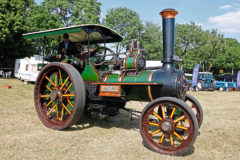The world’s only full-rigged tall ship
Posted by Chris Graham on 31st August 2022
Steve Newman spotlights Royal Clipper, the world’s only steel-hulled, five-masted, full-rigged tall ship that’s still afloat.
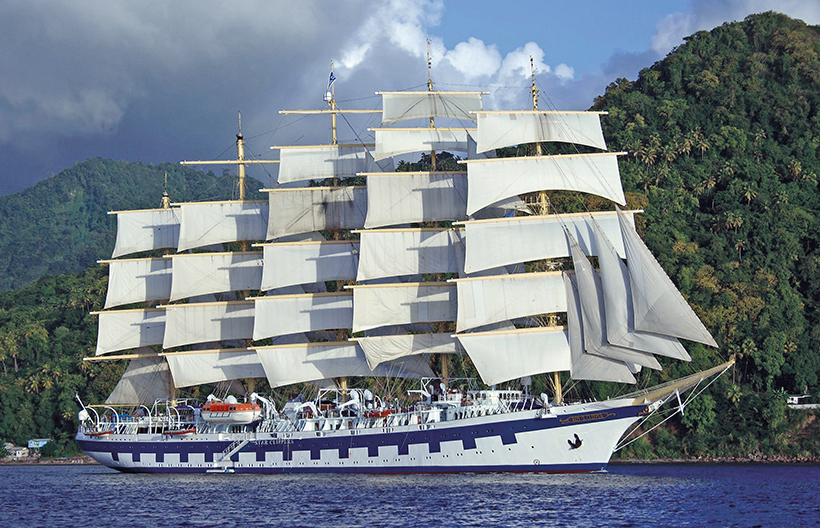
The world’s only full-rigged tall ship: The impressive sight of Royal Clipper under full sail off St Lucia.
Star Clippers was founded in 1989 by Swedish entrepreneur and classic boat connoisseur Mikael Krafft, and initially operated two identical four-masted barquentines: the 360ft Star Flyer, launched in 1991, and her twin, Star Clipper, launched in 1992. The vessels were the first sailing clippers to be built since 1910 and heralded a new golden age of sail, but one with modern amenities on the ships and, if necessary, motor power to fall back on.
Star Clippers proved so successful that, in 2000, Krafft launched Royal Clipper, an impressive ship modelled on the legendary five-masted tall ship Preussen, built almost a century earlier. ‘I had always been fascinated by Preussen,’ Krafft explained. ‘She was bigger and beamier than the clippers, and was a unique and highly effective sailing machine. I had a model of the ship when I was younger which inspired me to, one day, build a similar full-sixed ship.’

Royal Clipper catches the setting sun off Martinique, as she starts to turn into the wind.
The original Preussen was the pride of Germany’s famed Flying P Line in the early years of the 20th century. The full-rigged ship was Line’s flagship and the biggest sailing ship built at the time. The Flying P Liners were the sailing ships operated by German shipping company F. Laeisz of Hamburg. The company was founded in 1824 by Ferdinand Laeisz as a hat manufacturing company, but their initial involvement in shipping was unsuccessful, and their first ship, the three-masted wooden brig Carl of 1839, lasted only five years.
Subsequent vessels were more successful, with the company’s ships being built for speed. Laeisz specialised in the South American nitrate trade, and their ships acquired an excellent reputation for timeliness and reliability, which gave rise to the Flying P Line nickname. The five-masted barque Potosi made the voyage from Chile to England around Cape Horn in 1904 in just 57 days, a record at the time.
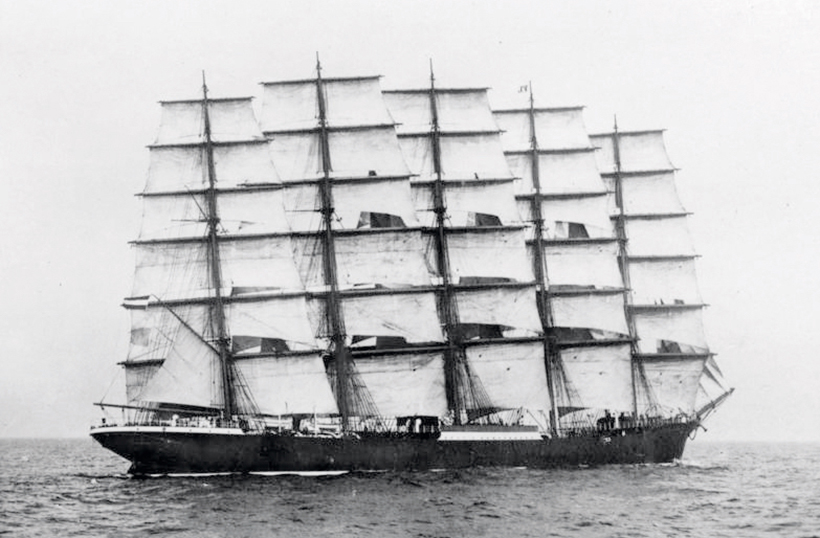
The five-masted ship Preussen, under full sail, was launched in July 1901.
The 5,081grt Preussen, built in 1902, was a huge full-rigged ship with a length of 147m, and a deadweight of over 7,800 tons. She could reach speeds of more than 18 knots and her greatest 24-hour distance was 392 nautical miles in 1908 during a voyage to Yokohama. Tragically, the magnificent vessel met an inglorious end in the Channel in November 1910 when, on her 14th outbound voyage, carrying a mixed cargo including a number of pianos for Chile, she was in collision with a steam-powered mail boat. The sailing ship came off worse and had to be beached on rocks near Dover.
Laeisz still exists, and is a diversified family-owned group of companies, which has its main interests in shipping, trade and insurance and operates a fleet of car carriers (carrying traditional names beginning with ‘P’), container ships and gas carriers.
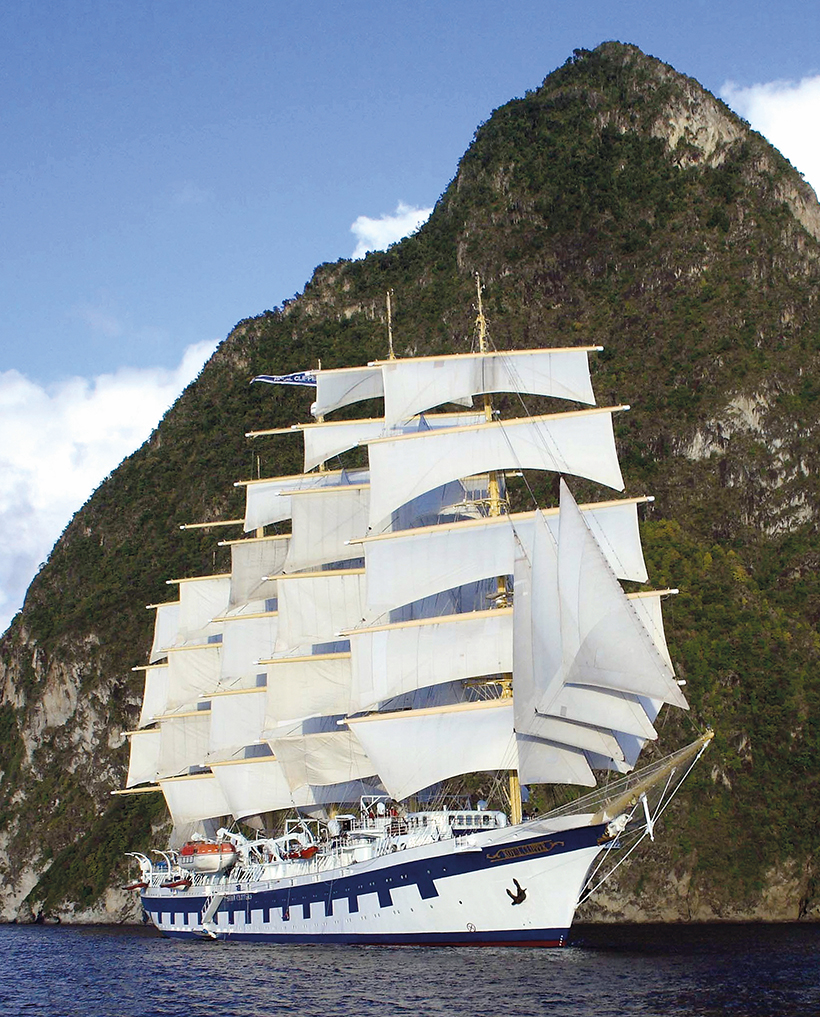
Royal Clipper cruises the Mediterranean during the summer. During the winter she offers Caribbean trips through the southern parts of the Lesser Antilles area.
The modern ship
The current incarnation of the original Preussen was originally built by Polish communist authorities as Gwarek, and was intended to be a floating vacation home for miners. Redesigned by Robert McFarlane of McFarlane ShipDesign, for Star Clippers, the vessel which became Royal Clipper was built using an existing steel hull designed by Zygmunt Choren and modified by the Gdansk Shipyard, being lengthened by 24m (79ft).
Following her redesign and rebuild, the ship was fitted out to offer passengers comfortable, crewed sailing on a traditional clipper ship, built with safety in mind, and with the elegant surroundings of a private yacht. Indeed, Royal Clipper’s Edwardian interiors were designed by Donald Starkey, who has created the décor for many mega-yachts.
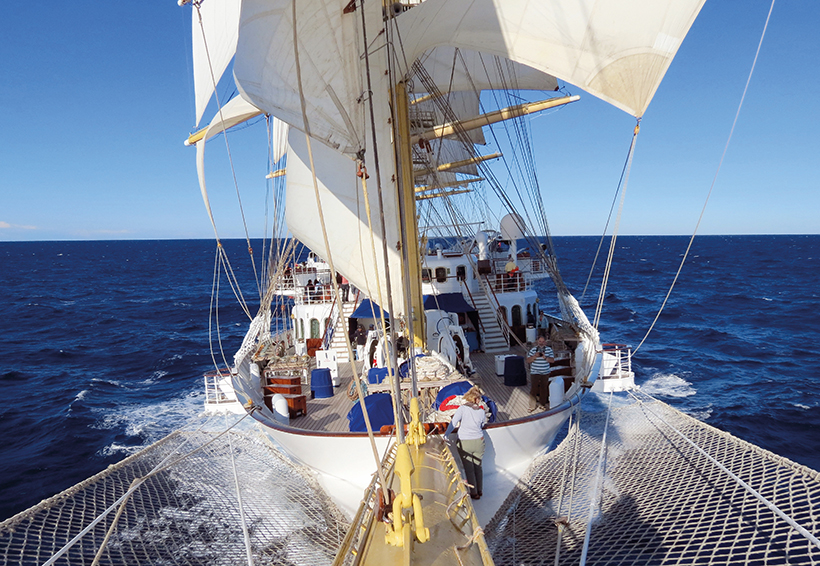
Looking back over Royal Clipper under sail off St Lucia.
Royal Clipper’s interior was completed at the Merwede shipyard in Rotterdam and she was launched in 2000. She carries the highest rating with Den Norske Veritas of 1A1+, and is designed to pass all safety and equipment ratings of the United Nations, as well as all US Coast Guard safety requirements. Her twin Caterpillar 3516B 2500KW main engines are supplemented by two auxiliary Caterpillar 3512B 1200KW engines.
On board, there are 1,800m2 of open deck area and three swimming pools, one with a glass bottom that filters light through a three-level atrium to the Dining Room below. There is an indoor-outdoor Tropical Bar, a Piano Lounge, a library with internet access, a watersports platform that can be lowered when the ship is at anchor, and a spa offering hairdressing, massage and beauty treatments in rooms with underwater portholes.Accommodation includes two luxurious Owner’s Suites, 14 balcony suites, two deck cabins, 90 outside cabins and six inside cabins, all with private bathrooms.

The wheel, ship’s bell and compass binnacle on the upper deck.
Eco credentials
Royal Clipper’s hull is painted in Jotun SeaQuantum Ultra S, which is compliant with IMO Antifouling System Convention AFS/CONF/26. In the Caribbean, where the wind is more predictable, the ship operates under wind power up to 70 per cent of the time, thus minimising use of the engines, which also power the air-conditioning and provide electricity for the day-to-day operation of the ship.
When Star Clippers ships do consume fuel, it is as clean a fuel as possible, with vessels only running on very pure, high-quality low-sulphur gas oil; for this the company was awarded the International Air Pollution Prevention Certificate.
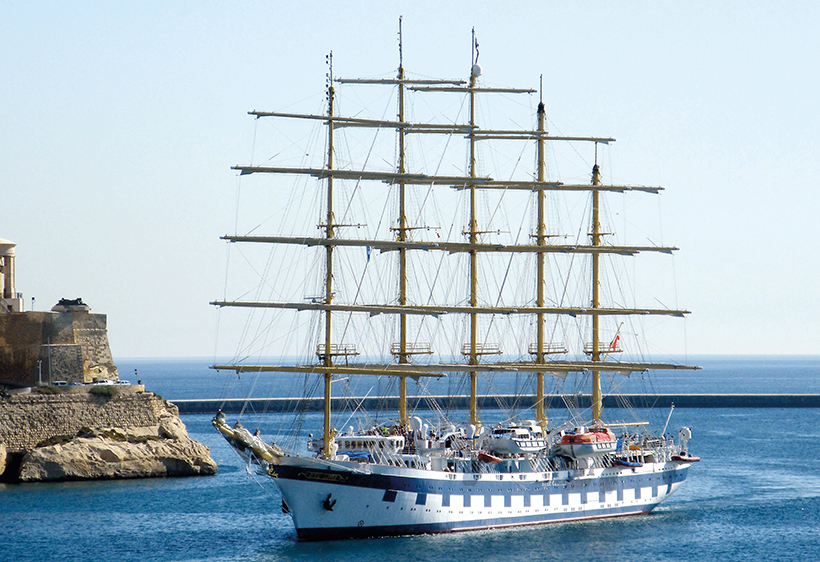
Royal Clipper arriving in Malta in 2012. In 2021 she spent 32 days undergoing repairs in dry dock and a repair berth, during which time a fire detection system was retrofitted.
The management of waste generated on board is governed by Star Clippers’ straightforward policy: reduce the amount of waste created; recycle as much as possible; and ensure proper disposal of the remaining waste. Crew training plays a vital part in helping to reduce and recycle waste, while technology is used to help wherever possible. Wastewater is contained in holding tanks while the vessel is in port or close to shore. After a stringent treatment process, this water is discharged when the vessel is outside national limits, in accordance with international regulations.
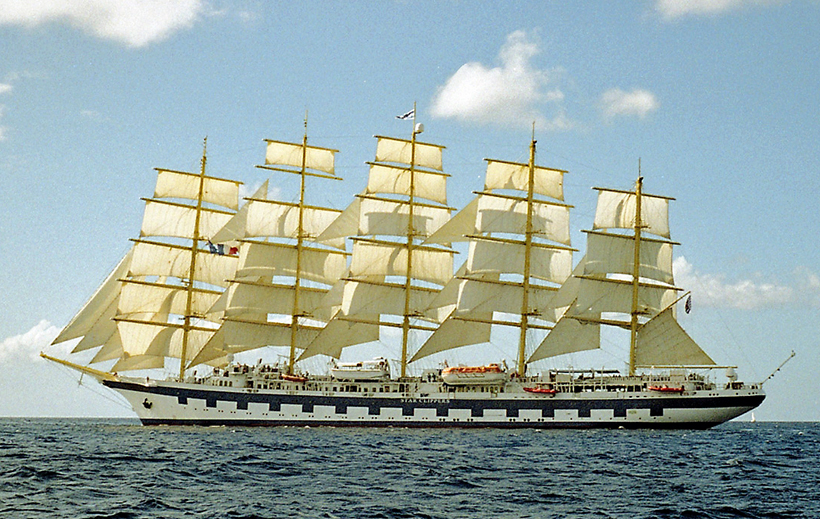
Royal Clipper with her sails raised makes a very impressive sight.
This story comes from the latest issue of Ships Monthly, and you can get a money-saving subscription to this magazine simply by clicking HERE




